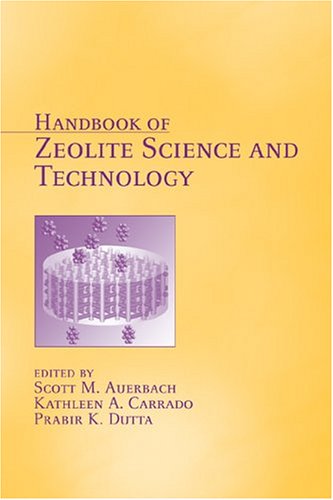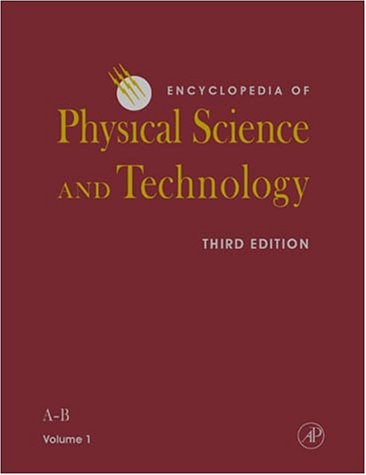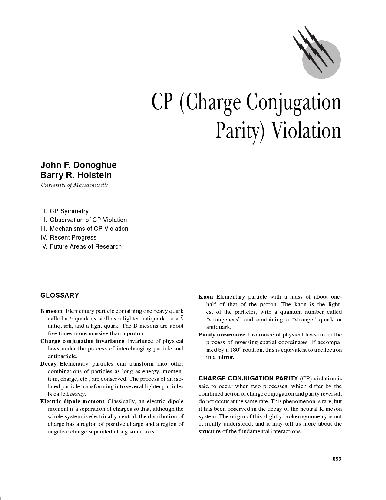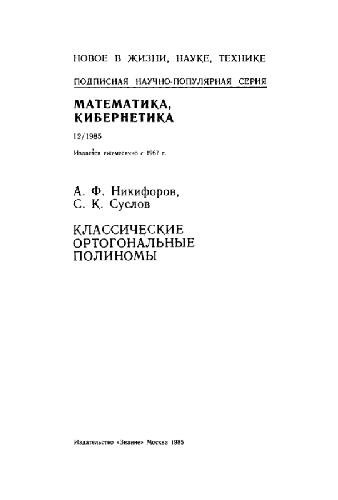Scott M. Auerbach, Kathleen A. Carrado, Prabir K. Dutta9780824740207, 0-8247-4020-3
Table of contents :
Handbook of Zeolite Science and Technology……Page 1
Preface……Page 3
Contents……Page 5
Contributors……Page 8
I. INTRODUCTION TO ZEOLITES……Page 12
Table of Contents……Page 0
II. ZEOLITE STRUCTURE……Page 13
III. NATURAL ZEOLITES……Page 14
C. High-Silica Zeolites……Page 16
V. ZEOLITE CHARACTERIZATION……Page 20
VI. ZEOLITE POROSITY……Page 21
VII. ZEOLITE PROPERTIES……Page 23
VIII. ZEOLITE MODELING……Page 24
B. Catalyst Applications……Page 25
REFERENCES……Page 28
I. INTRODUCTION……Page 31
II. COMPOSITIONAL INFLUENCE ON CRYSTALLIZATION……Page 33
1. Alkali Metal and Mixed Ion Systems with Tetrapropylammonium Ion (TPA)……Page 34
2. Quarternized Ions (Other than TPA)……Page 37
3. Amines and Other Structure-Directing Agents……Page 40
B. Temperature……Page 41
C. Fluoride Medium……Page 43
D. Mixed Solvent and Nonaqueous Systems……Page 44
E. Seed Crystals……Page 46
F. Solid-State Transformations……Page 48
B. Nanocrystals……Page 49
C. Single Crystals……Page 50
E. Membranes and Thin Films……Page 51
A. Dependence on Alkali Metal Cations……Page 52
B. Dependence on Organic Cations……Page 53
D. Morphology of ZSM-5 in Absence of Organic Molecules……Page 54
B. Reaction Engineering Models……Page 55
E. Pseudocell Model……Page 57
VI. CRYSTAL GROWTH PROCESSES……Page 59
A. Fundamentals of the Crystallization Pathways……Page 60
B. Nature of Intermediate Phases……Page 62
C. Molecular Precursors……Page 66
VII. CONCLUSIONS……Page 67
REFERENCES……Page 69
I. DEFINITIONS AND BASIC CONCEPTS……Page 74
A. The Basic Building Unit: The Tetrahedron……Page 76
B. Composite Building Units……Page 77
C. Cavities, Channels, and Larger CBUs……Page 80
III. CHEMICAL COMPOSITION OF ZEOLITE MATERIALS……Page 81
B. Zeolite X, Y, and USY (FAU)……Page 84
C. Zeolite ZSM-5 (MFI)……Page 86
D. Mordenite (MOR)……Page 87
V. SOURCES OF ZEOLITE STRUCTURAL INFORMATION……Page 88
VI. DISORDER AND STACKING FAULTS IN ZEOLITE STRUCTURES……Page 89
A. The ABC-6 Family……Page 91
B. Beta Family……Page 93
VII. EXTRAFRAMEWORK CATIONS……Page 94
REFERENCES……Page 95
II. SCOPE……Page 99
IV. GEL CHEMISTRY……Page 100
1. Monomer and Dimer: Intramolecular Effects……Page 101
a. Linear Trimer……Page 103
c. Linear Pentamer……Page 104
a. Branched Four-Silicon Cluster……Page 105
a. Trimer Ring……Page 106
b. Tetramer Ring……Page 107
a. Branched Trimer Ring……Page 108
c. Cis-Branched Trimer Ring……Page 109
4. Larger Rings: Pentamer and Hexamer Rings……Page 110
C. Multiple-Ring Clusters……Page 111
b. Central Branched Trimer-Trimer Ring……Page 112
a. Corner-Bonded Double Trimer Ring……Page 113
c. Corner-Bonded Trimer-Tetramer Ring……Page 114
b. Prismatic Hexamer, Double Hexamer Cage, and Sodalite Cage……Page 115
E. Aluminosilicate Clusters……Page 116
V. HYDRATION EFFECTS……Page 117
A. Methods: Techniques and Previous Studies……Page 118
B. Calculation of Solvation Energies Using the COSMO Methodology……Page 119
C. Molecular Mechanics Methods……Page 120
D. Hydration of Small Fragments: Comparison with DFT……Page 121
1. Effect of Crystalline Field……Page 122
2. Effect of Solvent……Page 125
3. Effect of Template……Page 126
4. Combined Template-Solvent Effect……Page 128
B. Stability of Template–Fragment Complexes in a Hydrated Environment……Page 129
VII. MODELING GROWTH……Page 132
VIII. CONCLUSIONS……Page 133
REFERENCES……Page 134
I. INTRODUCTION……Page 137
A. General Features of Zeolite Crystal Growth……Page 143
B. Influence of Various Factors on Zeolite Crystal Growth……Page 154
1. Crystallization Temperature……Page 155
2. Aging of the Reaction Mixture……Page 158
3. Seeding……Page 161
4. Alkalinity of Crystallizing System……Page 162
5. Dilution of Crystallizing System……Page 164
6. Ratio Between Si and Al (and Other Tetrahedron-Forming Elements)……Page 165
7. Inorganic Cations and Templates……Page 169
A. Overview to General Models of Crystal Growth……Page 173
B. Critical Evaluation of the Existing Models of the Crystal Growth of Zeolites……Page 175
A. Interdependences of the Critical Processes of Zeolite Crystallization……Page 193
B. Population Balance of Zeolite Crystallization……Page 195
1. Crystallization of Zeolite A from Hydrogel……Page 196
2. Crystallization of Zeolite ZSM-5 fromHydrogel……Page 198
V. SUMMARY AND CONCLUSION……Page 202
REFERENCES……Page 203
I. INTRODUCTION……Page 212
1. Aluminum Substitution and Framework Structure……Page 215
2. Dealumination Studies……Page 217
3. Highly Siliceous Zeolites……Page 218
B. 27Al Studies of Framework and Extraframework Sites……Page 219
1. Boron……Page 222
4. Vanadium……Page 223
D. 17O MAS NMR Studies of Oxygen Framework Sites……Page 224
1. Applications to Framework Structures……Page 225
F. NMR Studies of Extraframework Cations……Page 227
1. Sodium……Page 228
2. Cesium and Lithium……Page 231
G. 1H MAS NMR Studies of Zeolites……Page 233
H. Probe Molecule Studies of Acidity and Basicity……Page 236
A. Controlling the Sample Environment……Page 238
B. High-Temperature Studies of Catalysis and Catalyst Structure……Page 239
1. First-Order Quadrupolar Interaction……Page 240
3. Magic Angle Spinning……Page 242
4. Removing the Second-Order Quadrupolar Broadening……Page 243
c. Multiple-Quantum MAS NMR……Page 244
5. Acquiring Spectra……Page 246
6. Spin Counting……Page 247
7. Cross-polarization of Noninteger Spin Nuclei……Page 248
B. Double-Resonance and Two-Dimensional NMR Experiments for Structure Elucidation……Page 250
1. The Dipolar Interaction……Page 251
3. Experiments Designed to Measure Dipolar Coupling……Page 252
a. REDOR……Page 254
b. TRAPDOR (Transfer of Populations in Double-Resonance) NMR……Page 255
V. CONCLUSIONS……Page 256
REFERENCES……Page 257
I. ELECTRON SPIN RESONANCE BACKGROUND……Page 263
II. PULSED ELECTRON SPIN RESONANCE BACKGROUND……Page 266
A. Determination of Ion Location……Page 268
B. Determination of Adsorbate Geometry……Page 271
C. Control of Transition Metal Ion Site……Page 272
D. Observation of Reaction Intermediates……Page 274
E. Cupric Ion Movement During Dehydration……Page 278
F. Distinguishability of Two Metal Ion Sites……Page 280
G. Distinguishability of Metal Ions in Oxide Framework vs. Nonframework Sites……Page 282
H. Application of g Anisotropy to Determine Coordination Geometry……Page 289
A. Organic Radical Structure……Page 291
B. Organic Radical Reorientation……Page 293
REFERENCES……Page 295
I. INTRODUCTION……Page 297
II. TRANSMISSION ELECTRON MICROSCOPY……Page 298
B. Experimental Remarks Especially for Zeolite and Mesoporous Materials……Page 300
A. Sharp Spots and Diffuse Streaks……Page 301
B. HREM Image, Fourier Diffractogram, and ‘‘Mask Filtering’’……Page 302
C. Surface Structure……Page 303
1. Surfaces of FAU and EMT……Page 304
D. Mesoporous Materials……Page 306
IV. STRUCTURE DETERMINATION (ELECTRON CRYSTALLOGRAPHY)……Page 308
A. Fourier Reconstruction……Page 316
B. ED Intensity and Direct Method……Page 317
C. Framework Enhancement……Page 318
V. CONCLUSIONS……Page 319
REFERENCES……Page 320
I. INTRODUCTION……Page 322
II. CBMC SIMULATION TECHNIQUE……Page 324
III. SORPTION OF PURE ALKANES……Page 326
IV. SORPTION OF ALKANE MIXTURES……Page 333
V. SHAPE SELECTIVITY IN ZEOLITE CATALYSIS……Page 339
VI. CONCLUDING REMARKS……Page 342
REFERENCES……Page 343
I. GENERAL INTRODUCTION……Page 346
A. Basics of Mass Transfer in Applications of Zeolites……Page 347
B. Transport and Self-Diffusion via Fick’s Laws……Page 348
C. Desorption-Limited vs. Diffusion-Limited Fluxes……Page 351
1. Maxwell-Stefan Formulation……Page 356
2. Onsager Formulation……Page 359
A. Stochastic Motion and Jump Diffusion……Page 360
2. Geometrical Correlations……Page 362
3. Vacancy Correlations……Page 363
4. Single-File Diffusion……Page 366
C. Correlation Functions……Page 367
1. Self Diffusion……Page 368
2. Transport Diffusion……Page 370
IV. METHODS OF MEASURING DIFFUSION IN ZEOLITES……Page 371
b. Reaction under Diffusion Control……Page 372
a. Uptake Methods……Page 373
b. Zero Length Column……Page 375
c. Frequency Response……Page 376
d. Infrared Detection Methods……Page 377
a. Tracer Zero Length Column……Page 380
a. Interference Microscopy……Page 382
2. Self-Diffusion……Page 383
a. Quasi-Elastic Neutron Scattering……Page 384
b. Pulsed-Field Gradient NMR……Page 386
D. Correlating Results fromDifferentMeasurements……Page 388
a. Ordered Zeolite Models……Page 389
b. Charge Distributions……Page 390
c. Framework Flexibility……Page 392
d. Guest–Zeolite Force Fields……Page 394
2. Equilibrium and Nonequilibrium Molecular Dynamics……Page 395
b. Ensembles……Page 396
d. Dynamics of Hydrocarbons in Silicalite-1 and 10R Zeolites……Page 397
e. Single-File Diffusion……Page 399
a. Rare Event Theory……Page 400
b. Siliceous Zeolite……Page 402
d. Finite Loadings……Page 403
f. Quantum Dynamics……Page 404
a. Temperature-Independent Lattice……Page 405
c. Loading-Independent Lattice……Page 406
a. Algorithms……Page 407
b. Ensembles……Page 408
c. Models of Finite Loading……Page 409
d. Infinite Dilution Simulations……Page 410
f. Benzene in Na-X……Page 411
g. Reactive Systems……Page 412
h. Open Systems……Page 413
i. Molecular Traffic Control……Page 414
2. Maxwell-Stefan and Fick……Page 415
VI. SUMMARY AND PROSPECTS FOR THE FUTURE……Page 416
ACKNOWLEDGMENTS……Page 417
REFERENCES……Page 418
I. INTRODUCTION……Page 428
1. Theory of IR Spectroscopy……Page 429
a. Transmission IR Spectroscopy……Page 431
b. Diffuse Reflectance IR (Fourier Transform) Spectroscopy (DRIFT)……Page 432
1. Introduction……Page 433
2. Theory of Raman Spectroscopy……Page 434
b. FT-Raman Spectroscopy……Page 436
d. UV Raman Spectroscopy……Page 437
A. Framework Vibrations……Page 440
B. Cation Vibrations……Page 443
C. Hydroxyl Groups……Page 444
D. Acidity and Basicity Characterization……Page 447
b. Aliphatic Amines……Page 448
d. Nitriles……Page 449
e. Less Basic Molecules (Hydrocarbons, CO, N2, etc.)……Page 450
2. Basicity Characterization……Page 452
a. Carbon Dioxide……Page 453
b. Pyrrole……Page 454
1. H/D Exchange……Page 457
SKELETAL ISOMERIZATION OF N-BUTENES……Page 458
XYLENE ISOMERIZATION……Page 461
DISPROPORTIONATION……Page 462
b. Base-Catalyzed Reactions……Page 463
a. NOx Reduction……Page 465
a. Intermediates in Hydrocarbon Conversion……Page 468
a. Platinum-Based Clusters……Page 470
b. Palladium……Page 472
c. Other Metal Clusters……Page 473
a. Chiral Salen Manganese(III)-A-MCM-41……Page 474
c. [Mn(salen)Cl] in EMT……Page 475
B. Framework Vibrations……Page 476
b. T-O-T Angle……Page 477
c. Si/Al Ratios……Page 478
2. High-Frequency Bands in 850–1210 cm 1……Page 479
C. Heteroatoms Incorporation……Page 481
D. Synthesis Mechanism of Zeolites……Page 483
1. Zeolite A……Page 484
2. Zeolite X, Y……Page 485
5. ZSM-5……Page 486
E. Charge-Balancing Cations……Page 487
F. Raman Spectroscopic Studies of Adsorbed Molecules……Page 490
B. UV Raman Spectroscopy……Page 493
C. UV Raman Spectra of Microporous Materials……Page 494
3. Zeolite A……Page 495
7. Zeolite Beta……Page 496
D. Aluminosilicate Zeolites With Various Si/Al Ratios……Page 497
E. Crystallization of Microporous Materials……Page 498
2. Characterization of TS-1 Zeolites……Page 499
3. UV Raman Spectra of TS-1 Zeolite……Page 500
4. UV Raman Spectra of Fe-ZSM-5……Page 503
5. UV Raman Spectra of V-MCM-41……Page 505
G. UV Raman Spectroscopic Studies of Adsorbed Molecules……Page 506
REFERENCES……Page 508
A. Structure……Page 519
B. Zeolite as a Reaction Cavity: Characteristics……Page 520
A. Micropolarity and Electric Field……Page 522
B. Brønsted and Lewis Acidity and Basicity……Page 525
A. Site of Location Is Controlled by Cation–Organic Interaction……Page 528
B. Inhomogeneous Distribution of Guests within Zeolites……Page 530
C. Role of Water Within a Zeolite……Page 533
A. Triplets……Page 539
B. Radical Cations……Page 543
C. Carbocations……Page 545
VI. ZEOLITE AS A REACTION MEDIUM: IMPORTANCE OF SHAPE AND SIZE OF REACTION CAVITY AND ROLE OF FREE VOLUME……Page 548
A. State Switching in Carbonyl Compounds: Role of Cation–Carbonyl Interaction……Page 557
B. Selectivity During Singlet Oxygen–Mediated Oxidation of Olefins: Role of Cation–Olefin p Interaction……Page 564
C. Cation Interactions Restrict the Mobility of Reactants and Intermediates: Cation–Aromatic p Interaction……Page 568
D. Stabilization of Hydrocarbon–Oxygen Contact Charge Transfer Complexes: Role of Polarizing Power (Superpolar Character) of the Zeolite Interior……Page 572
VIII. ZEOLITE AS A REACTION MEDIUM: CATION–ORGANIC INTERACTION ENHANCES TRIPLET PRODUCTION—HEAVY CATION–ORGANIC INTERACTION……Page 575
IX. CONVENTIONAL ENERGY AND ELECTRON TRANSFER CHEMISTRY WITHIN ZEOLITES……Page 578
X. ENANTIOSELECTIVE PHOTOREACTIONS WITHIN ZEOLITES: DEVELOPMENT AND ESTABLISHMENT OF THE CONCEPT AND GENERALIZATIONS……Page 580
XI. SUMMARY……Page 586
REFERENCES……Page 587
I. INTRODUCTION……Page 594
II. PHOTOINDUCED ELECTRON TRANSFER BETWEEN INTERCALATED SPECIES……Page 597
a. Assembly and Characterization……Page 598
ZEOLITE SHAPE SELECTIVITY……Page 606
WATER ADSORPTION……Page 608
HYPERBARIC EFFECT OF SURFACE-LINING WATER……Page 609
ACID–BASE INTERACTION OF NITRILE GROUPS WITH CATIONS……Page 611
LONG-LIVED CHARGE SEPARATION……Page 613
FRAMEWORK AS PROTON ACCEPTOR……Page 619
a. Characteristics……Page 620
b. As Visual Probes for Zeolite Micropolarity……Page 623
c. As Visual Probes for NaI Migration……Page 624
3. Iodide-Alkali-Metal Cation CTComplexes……Page 625
4. Arene-Arene and Arene-Tetranitromethane Complexes……Page 627
5. Hydrocarbon-Oxygen CT Complexes……Page 631
1. ET from Photosensitized Arenes to Alkali-Metal Cations……Page 637
a. Dyes as the Photosensitizers……Page 643
b. Triarylpyrilium and Triarylmethylium as the Photosensitzers……Page 644
c. Ru(bpy)3 2+ as the Photosensitizer……Page 647
4. Alkali Metal Ionic Clusters……Page 660
III. PET FROM FRAMEWORK TO INTERCALATED SPECIES……Page 666
1. Framework-MV2+ CT Interaction and PET from Framework to MV2+……Page 669
2. Framework–I2 CT Interaction……Page 676
3. Framework-Acceptor-Guest Donor Triad (D-A-D’) Interaction……Page 681
1. Photoexcitation of the Acceptor……Page 683
2. Excitation of the Framework by High-Energy Radiation……Page 689
A. Strategies to Achieve Long-Lived Charge Separation……Page 692
B. Reduction of Ru(bpy) 3+ by Water……Page 704
C. Reduction of Ru(bpy) 3+ by Zeolite Framework……Page 708
D. Simultaneous Flow of Cocations with Electrons and Retardation of Reverse Flow of Cations for Long-Lived CS……Page 710
E. Application……Page 711
V. CONCLUDING REMARKS……Page 714
REFERENCES……Page 715
I. INTRODUCTION……Page 724
II. HISTORICAL ACCOUNT OF ELECTROCHEMISTRY INVOLVING ZEOLITES……Page 726
III. DESIGN AND PREPARATION OF ZEOLITE MODIFIED ELECTRODES……Page 727
1. Concentration of Solution Phase Electroactive Probes at the ZME Surface……Page 733
2. Electrochemical Activity of Electroactive Species Ion Exchanged in Zeolites……Page 735
3. Electrochemical Activity of Electroactive Species Physically Entrapped in Zeolites……Page 747
4. Electrochemistry of the Molecular Sieve Alone……Page 753
B. Interplay Between Charge Transfer and Mass Transport: Electron Transfer Mechanisms……Page 754
C. Compilation of the Electroactive Probes and Zeolite Types Investigated at ZMEs……Page 756
A. Electrocatalysis at Zeolite-Modified Electrodes……Page 758
B. Preconcentration and Permselectivity……Page 761
C. Indirect Amperometric Detection……Page 765
D. Dispersion Electrolysis and Electrocatalysis at ‘‘Electrode-Modified Zeolites’’……Page 771
F. Amperometric Biosensors……Page 774
G. Batteries and Fuel Cells……Page 777
H. Photoelectrochemistry……Page 778
I. Electrochemical Characterization of Reactions in Zeolites……Page 779
ACKNOWLEDGMENTS……Page 780
REFERENCES……Page 781
I. INTRODUCTION……Page 787
A. Cluster Approach……Page 794
B. Embedded Methods……Page 795
A. Activation of Ethylene……Page 797
B. Methanol Transmethylation……Page 800
C. Monomolecular Isomerization of Toluene……Page 801
IV. CLUSTER APPROACH STUDIES……Page 804
A. Hydrocarbons……Page 805
1. Ethane……Page 806
2. Propane……Page 808
B. Methanol……Page 814
C. Comparison of Activation by Brønsted and Lewis Acidic Sites……Page 818
A. Alkane and Olefin……Page 821
B. Aromatics……Page 825
VI. CONCLUDING REMARKS……Page 828
REFERENCES……Page 829
I. INTRODUCTION……Page 835
A. Aluminosilicate Zeolites……Page 836
C. Methanol to Hydrocarbon Processes……Page 837
2. Methanol to Olefin……Page 838
1. Several Distinct OxoniumMechanisms……Page 840
5. Introduction to the Hydrocarbon Pool Mechanism……Page 841
A. Benchtop Reactor Systems……Page 843
1. Nuclear Magnetic Resonance……Page 845
3. Theoretical Modeling……Page 847
A. Evidence for the Availability and Reactivity of Intermediates……Page 852
B. Failure of All Direct Mechanisms……Page 855
C. Methylbenzene-Based Pool on HSAPO-34……Page 856
D. How Does the Hydrocarbon Pool Work?……Page 859
V. CONCLUSIONS……Page 866
REFERENCES……Page 867
I. INTRODUCTION……Page 869
II. ZEOLITE MEMBRANES BY IN SITU AND SECONDARY GROWTH……Page 873
A. Zeolite A Membranes by In Situ and Seeded Growth Techniques……Page 874
B. Zeolite MFI Membranes by In Situ Growth Techniques……Page 878
C. Zeolite MFI Membranes by Secondary Growth Techniques……Page 887
D. Modifications and Postsynthesis Treatment of MFI Membranes……Page 891
E. Calcination Effects on Zeolite Membranes……Page 892
F. Characterization of Nanoporosity in MFI Membranes……Page 894
G. Studies of MFI Membrane Formation……Page 896
H. Faujasite Membranes……Page 901
I. Membranes of Other Framework Types……Page 903
III. METHODS FOR DEPOSITION OF ZEOLITIC SEED LAYERS ON SUBSTRATE SURFACES……Page 905
A. Zeolites as Ionic Conductors……Page 912
B. Zeolites as Nanostructured Hosts and Dielectrics……Page 915
REFERENCES……Page 916
I. INTRODUCTION……Page 922
1. Defects……Page 923
2. Size and Shape Control……Page 924
B. Inclusion of Optically Functional Guest Molecules in Large Zeolitic Crystals……Page 925
a. Ion Exchange……Page 926
c. Adsorption……Page 927
A. Microscopy with Polarized Light……Page 928
B. UV/Vis Spectroscopy on Individual Zeolite Crystals……Page 929
D. Infrared Spectroscopy……Page 931
E. Raman Spectroscopy……Page 933
IV. OPTICAL APPLICATIONS BASED ON ZEOLITIC GUEST/HOST MATERIALS……Page 934
A. Optical Sensing……Page 935
B. Light Harvesting……Page 936
D. Frequency Conversion……Page 938
E. Photochromic Switching……Page 941
F. Photosensitive Refractive Index Switching……Page 942
2. Nondestructive Readout Capability and Reversibility……Page 945
ACKNOWLEDGMENT……Page 946
REFERENCES……Page 947
A. Relevant Reactions in Environmental Catalysis……Page 951
B. Necessity of New DeNOx Technologies……Page 952
A. Amounts of Reversibly and Irreversibly Adsorbed NO on Zeolites……Page 953
B. IR Study of NO Species on Metal Ion–Exchanged Zeolites……Page 956
1. NO on Cu-Exchanged Zeolites……Page 957
2. NOon Co-Exchanged Zeolites……Page 960
C. ESR Studies of NO Molecules on Metal Ion–Exchanged Zeolites……Page 961
A. Catalytic Activity……Page 966
2. Reaction Mechanism of Catalytic NO Decomposition over Cu-MFI……Page 969
1. Development of HC-SCR and Outline of Zeolite Catalytic Performance……Page 970
2. Copper Ion-Exchanged MFI Zeolites……Page 974
3. Iron Ion-Exchanged MFI Zeolites……Page 976
B. Two-Stage Treatments: Oxidation of NO to NO2 and Subsequent Reduction of NO2 with Hydrocarbons……Page 977
1. NOx Storage-Reduction……Page 978
2. Intermediate Addition of Reductant Between Oxidation and Reduction Catalysis……Page 979
V. MOLECULAR DIFFUSION OF NOx IN ZEOLITES……Page 980
VI. CONCLUSIONS……Page 981
REFERENCES……Page 982
1. Introduction……Page 989
b. Xenon Purification Performance……Page 991
1. Introduction……Page 994
2. Iodine Adsorption on Zeolite……Page 995
3. Apatite Matrix Formation……Page 996
1. Introduction……Page 997
2. Adsorbent Evaluation……Page 998
A. Apparatus and Procedure……Page 1000
REFERENCES……Page 1005
A. Zeolite Preparation……Page 1006
B. Ion-Exchange Measurements and Presentation of the Data……Page 1007
A. Uni-Univalent Ion Exchange……Page 1008
B. Di-Univalent Ion Exchange……Page 1015
C. Rare Earth Ion Exchange……Page 1019
A. Uni-Univalent Exchange……Page 1023
B. Di-Univalent Ion Exchange……Page 1024
A. Ion Exchange in Zeolite T and Erionite……Page 1026
C. Clinoptilolite……Page 1028
D. Zeolite L……Page 1033
VI. NOBLE METAL ION EXCHANGE IN ZEOLITES NaX, NaY, AND MORDENITE……Page 1037
A. Hydronium Ion Exchange……Page 1039
B. Inorganic Ion Exchange of ZSM-5……Page 1043
C. Organic Ion Exchange of ZSM-5……Page 1045
D. Ion Exchange in EU-1……Page 1046
VIII. GENERALIZATIONS OR THE RULES OF ION EXCHANGE……Page 1047
IX. THERMODYNAMICS OF ION EXCHANGE……Page 1049
X. SALT IMBIBEMENT……Page 1054
A. General Approach……Page 1055
C. Crossflow Operation……Page 1056
D. Countercurrent Operation……Page 1057
REFERENCES……Page 1060
I. INTRODUCTION……Page 1062
II. PROPERTIES OF ZEOLITES FOR GAS SEPARATION……Page 1069
III. SELECTIVITY OF ADSORPTION……Page 1072
V. HEATS OF ADSORPTION……Page 1075
VI. ADSORPTION KINETICS……Page 1079
A. Models for Adsorption Kinetics……Page 1085
B. Influence of Trace Moisture on Adsorptive Properties……Page 1086
A. Gas Drying……Page 1087
B. Production of Oxygen-Enriched Air……Page 1091
C. Simultaneous Production of Nitrogen and Oxygen From Air……Page 1095
D. Production of Hydrogen from SMR Off-Gas……Page 1097
E. Production of Methane and Carbon Dioxide From Landfill Gas……Page 1098
F. Separation of Normal and Isoparaffins……Page 1100
REFERENCES……Page 1101
II. TRANSIENT UPTAKE OF A SINGLE COMPONENT WITHIN A ZEOLITE……Page 1104
A. Fick, Onsager, and Maxwell-Stefan Approaches……Page 1106
B. Adsorption vs. Desorption Rates……Page 1108
C. Constant Fick Diffusivity and LDF Models……Page 1109
D. Isotherm Inflection Influence……Page 1110
III. PERMEATION OF SINGLE COMPONENT ACROSS ZEOLITE MEMBRANE……Page 1114
A. Permeation of Methane and n-Butane Across MFI Membrane……Page 1116
IV. MODELING MIXTURE DIFFUSION WITH THE MAXWELL-STEFAN FORMULATION……Page 1117
A. Permeation of Methane–n-Butane Mixture Across MFI Membrane……Page 1121
B. Diffusion of nC6 3MP Mixture in MFI Zeolite……Page 1124
C. Diffusion of N2 and CH4 in Zeolite 4A……Page 1129
D. Co- vs. Counterdiffusion of N2 and CH4……Page 1130
E. Separation of O2 and N2 Using 4A Zeolite……Page 1131
VI. CONCLUSIONS……Page 1133
NOMENCLATURE……Page 1134
Superscripts……Page 1135
REFERENCES……Page 1136
I. INTRODUCTION……Page 1139
A. Effect of Dietary Inclusions of Clinoptilolite……Page 1141
III. RADIOPROTECTION……Page 1143
V. ANTIMICROBIAL EFFECTS……Page 1144
VI. HEMODIALYSIS, ANESTHESIOLOGY, AND HEMOPERFUSION……Page 1145
VIII. BONE FORMATION……Page 1146
A. Antacid Activity……Page 1147
X. IMMUNOLOGICAL CONSEQUENCES……Page 1148
A. Immunomodulatory Effect……Page 1149
XI. EFFECTS ON DIABETES MELLITUS……Page 1150
XII. CONTRAST MEDIUM FOR MAGNETIC RESONANCE IMAGING……Page 1152
XIV. BIOSENSORS……Page 1153
XV. EFFECT ON TUMOR GROWTH……Page 1154
C. Tumor Growth in vivo……Page 1155
XVI. TOXICOLOGY OF CLINOPTILOLITE……Page 1159
A. Changes in Hematological Parameters……Page 1161
C. Interaction of Clinoptilolite with Small Intestine……Page 1162
D. Zeolite and Reproduction……Page 1163
B. Microcapsulation and Slow Release……Page 1165
C. Zeolites as Models for Biomimetic Oxidation Catalysts……Page 1166
REFERENCES……Page 1167







Reviews
There are no reviews yet.